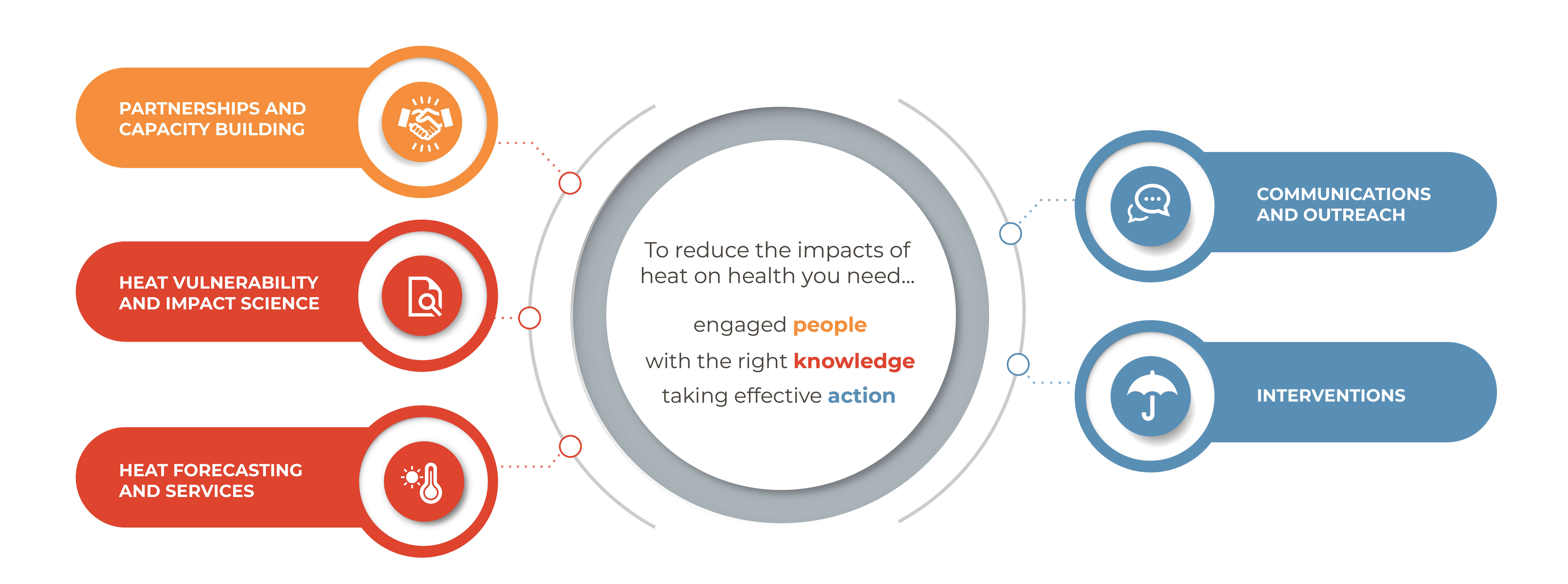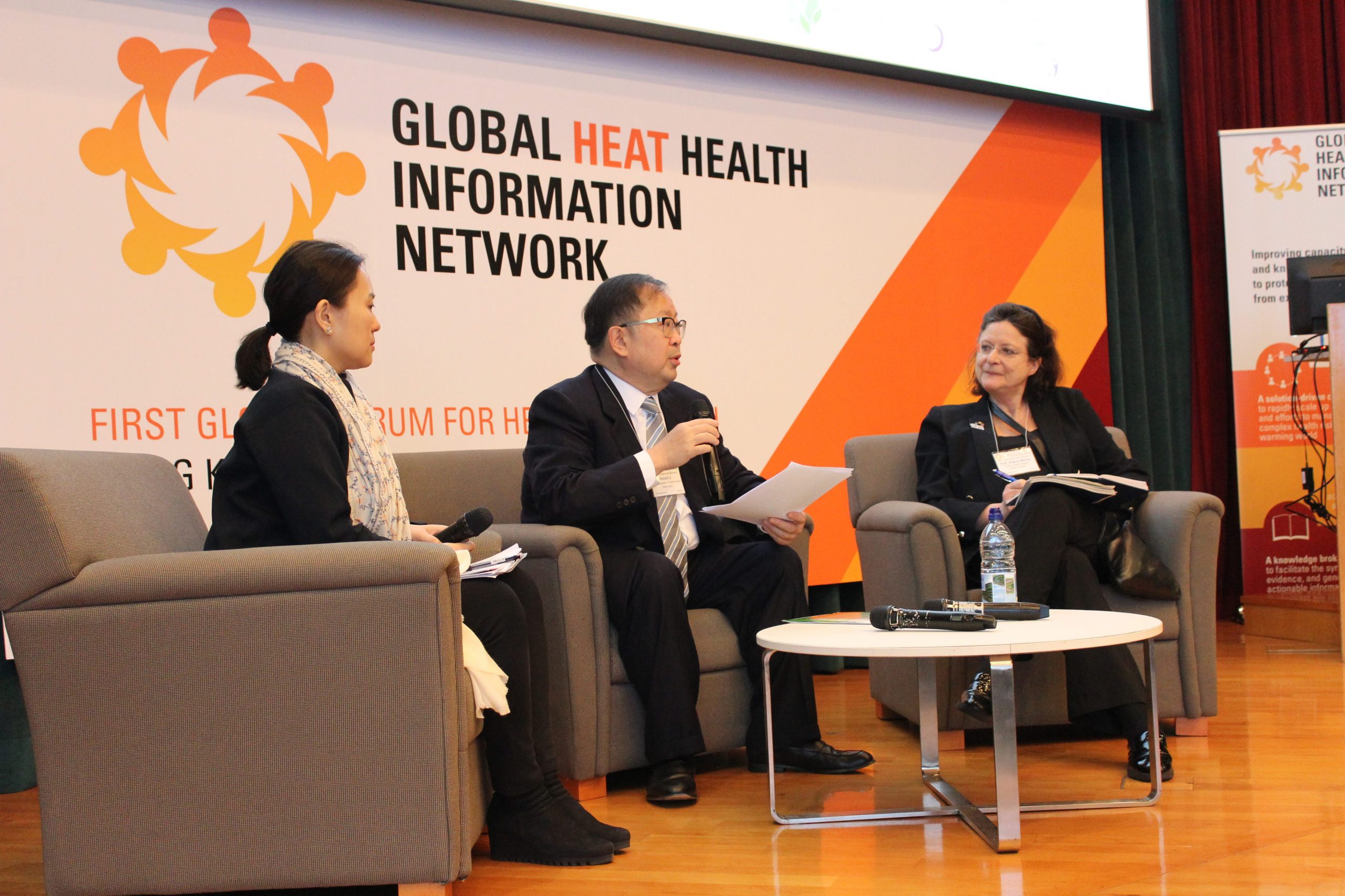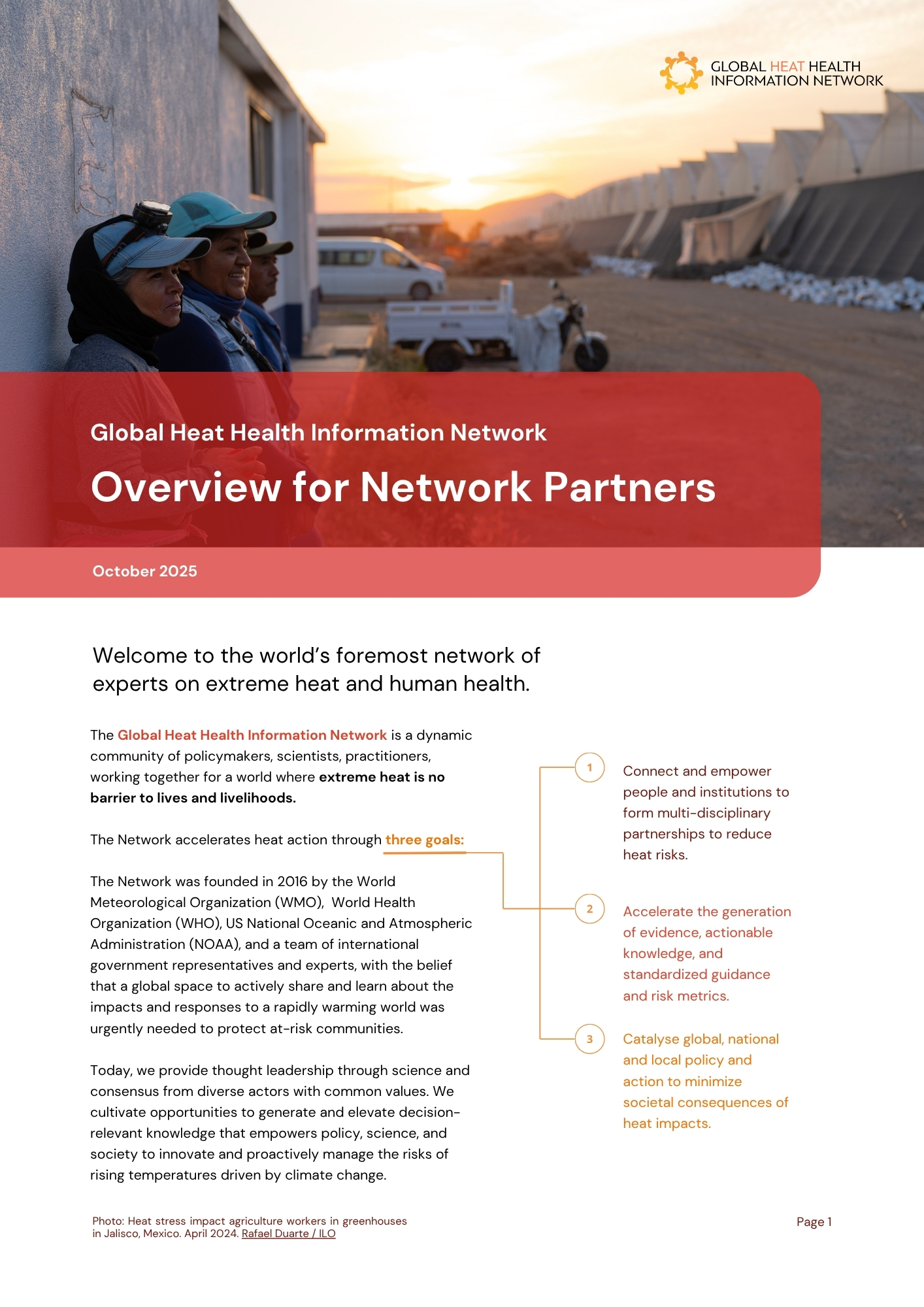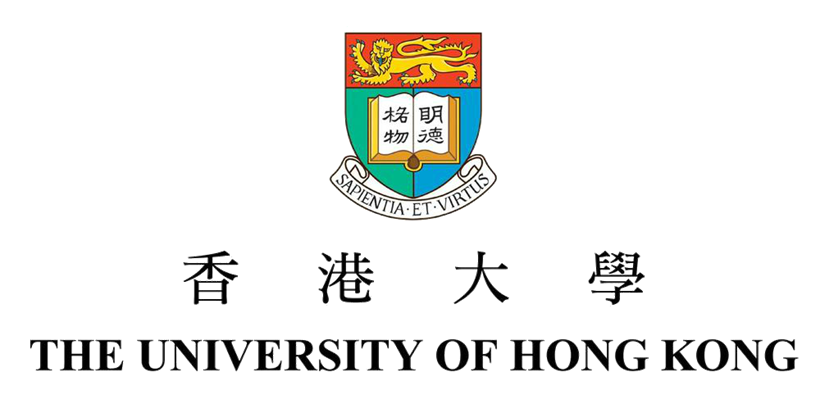The Global Heat Health Information Network is a dynamic voluntary community of policymakers, scientists, practitioners, working together for a world where extreme heat is no barrier to lives and livelihoods.
The Network accelerates heat action through three goals:
- Connect and empower people and institutions to form multi-disciplinary partnerships to reduce heat risks.
- Accelerate the generation of evidence, actionable knowledge, and standardized guidance and risk metrics.
- Catalyze global, national and local policy and action to minimize societal consequences of heat impacts.

Leadership Team Meeting 2024
Network Management Committee, Southeast Asia Heat Health Hub Steering Committee and meeting representatives. Photo: Ong Yeong Bing / July 2024
How We Work
The Network is an initiative of WMO, WHO, and NOAA. Its Technical Support Unit (TSU), hosted at the World Meteorological Organization in Geneva, provides global coordination and management.
The breadth of the Network’s impact is facilitated by our ability to leverage the expertise and projects of our contributing partners and experts in a timely manner.
Network activities are currently supported by philanthropic and government donors. A financial trust fund for the Network is managed at WMO.
Activities
The Network’s activities help engage and improve the capacity of governments, organizations, and professionals to protect populations from the avoidable health risks of extreme ambient heat. Partners benefit from ongoing activities, including:
- Global and Regional Heat Health Forums
- Learning and Exchange Events: masterclasses, dialogues, regional events and trainings
- Science to policy engagement and agenda setting processes
- Collaborative campaigns and projects
- Synthesis reports and resources on heat health via our website, including inventories of Heat Health Action Plans and case studies; COVID-19 and Heat Guidance;
- Communications: News, information and social media, Global Heat Health Digest, publications
Regional Hubs
Regional Hubs drive the Network’s goals, activities and partnerships at the regional level by bringing together leading partners with strong technical expertise and regional understanding.
- South Asia (coming 2025)
- Latin America (coming 2025)

Current and planned regional hubs
5 Pillars of Integrated Heat Health Action
The Network’s approach is grounded in tested good practice, to activate five interconnected pillars that guide effective and coordinated responses to rising heat risks worldwide.
- First, Partnerships and Capacity Building strengthen the ability of institutions and individuals to collaborate across disciplines and sectors, from local to global levels. This includes training, coordination, and the development of effective partnership models.
- Second, Heat Vulnerability and Impact Science enhances understanding of who is most at risk and why, through data, research, and monitoring of human vulnerability, health outcomes, and environmental risk factors.
- Third, Extreme Heat Services support timely, accurate extreme heat science, including forecasts, outlooks, and predictions, informing research and early warning systems that improve risk monitoring and anticipatory action and long-term planning.
- Fourth, Interventions focus on implementing and scaling evidence-based actions—such as policies, public health planning, and infrastructure solutions—to reduce exposure and protect communities.
- Finally, Communications and Outreach ensure that heat risk is clearly communicated and understood by all sectors and populations through targeted messaging, advocacy, and knowledge sharing.

Background
The Network was founded in 2016 by the World Meteorological Organization (WMO), World Health Organization (WHO), US National Oceanic and Atmospheric Administration (NOAA), and a team of international government representatives and experts, with the belief that a global space to actively share and learn about the impacts and responses to a rapidly warming world was urgently needed to protect at-risk communities. It set out to help partners rapidly scale up science and policy efforts; to harmonize and improve information; and create opportunities for sharing across regional and local communities of health professionals, decision makers and scientists motivated to address this issue.
Today, we continue to provide thought leadership grounded in science and guided by a shared set of values among diverse actors. We connect actors to leverage our unique institutional strengths to cultivate opportunities that generate and elevate decision-relevant knowledge to empower policy, science, and society to innovate and proactively manage the risks of rising temperatures driven by climate change.

Our Partners
Global Heat Health Information Network partners are organizations that are committed to reducing the rising risks of extreme heat to health and well-being worldwide.
From UN agencies, national weather services and public health institutes, to leading universities, humanitarian actors, city networks, and private sector innovators, our partners share a common mission: to work together for a world where extreme heat is no barrier to lives and livelihoods.




